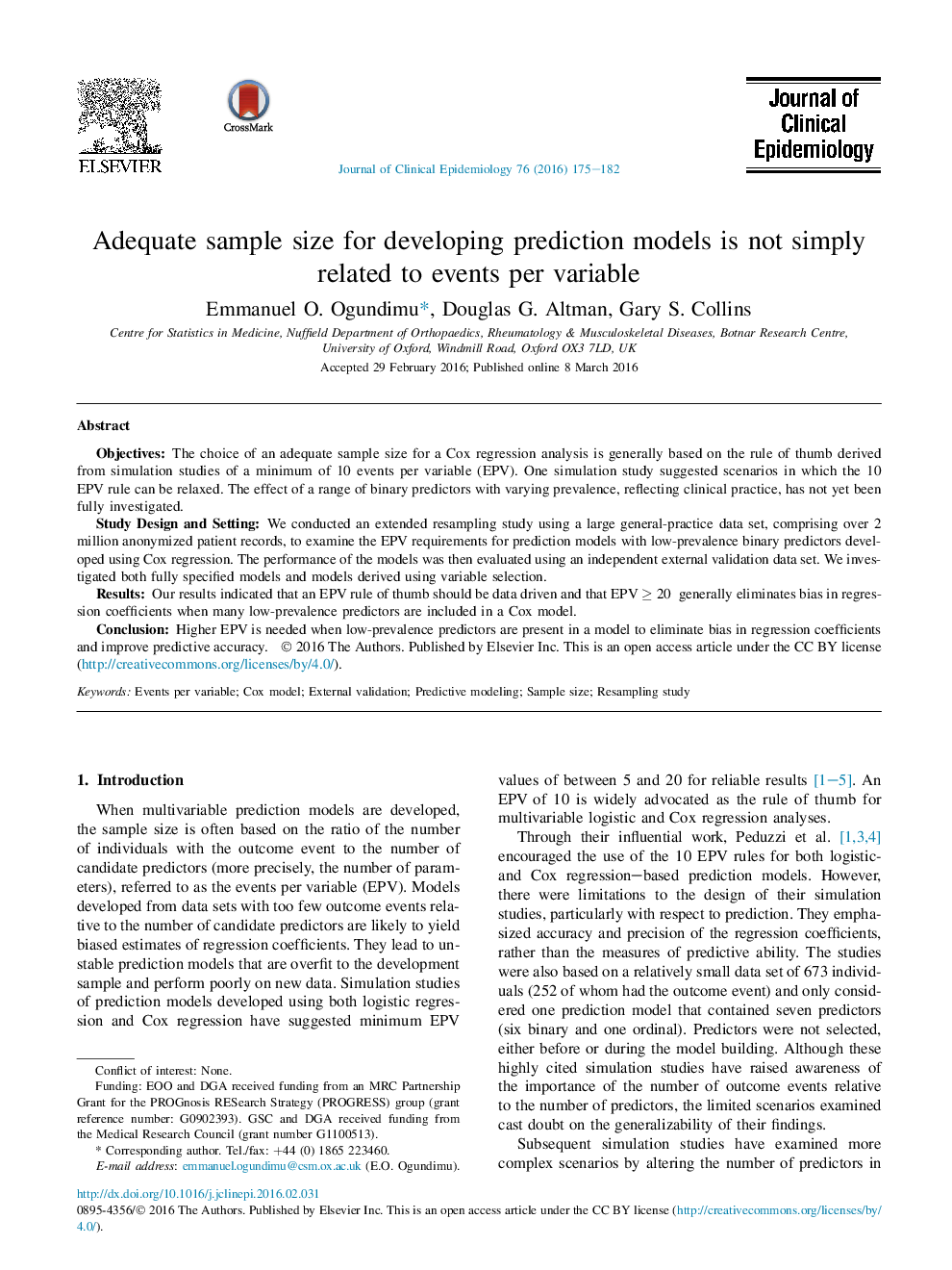| Article ID | Journal | Published Year | Pages | File Type |
|---|---|---|---|---|
| 5121941 | Journal of Clinical Epidemiology | 2016 | 8 Pages |
ObjectivesThe choice of an adequate sample size for a Cox regression analysis is generally based on the rule of thumb derived from simulation studies of a minimum of 10 events per variable (EPV). One simulation study suggested scenarios in which the 10 EPV rule can be relaxed. The effect of a range of binary predictors with varying prevalence, reflecting clinical practice, has not yet been fully investigated.Study Design and SettingWe conducted an extended resampling study using a large general-practice data set, comprising over 2 million anonymized patient records, to examine the EPV requirements for prediction models with low-prevalence binary predictors developed using Cox regression. The performance of the models was then evaluated using an independent external validation data set. We investigated both fully specified models and models derived using variable selection.ResultsOur results indicated that an EPV rule of thumb should be data driven and that EPV ⥠20 â generally eliminates bias in regression coefficients when many low-prevalence predictors are included in a Cox model.ConclusionHigher EPV is needed when low-prevalence predictors are present in a model to eliminate bias in regression coefficients and improve predictive accuracy.
